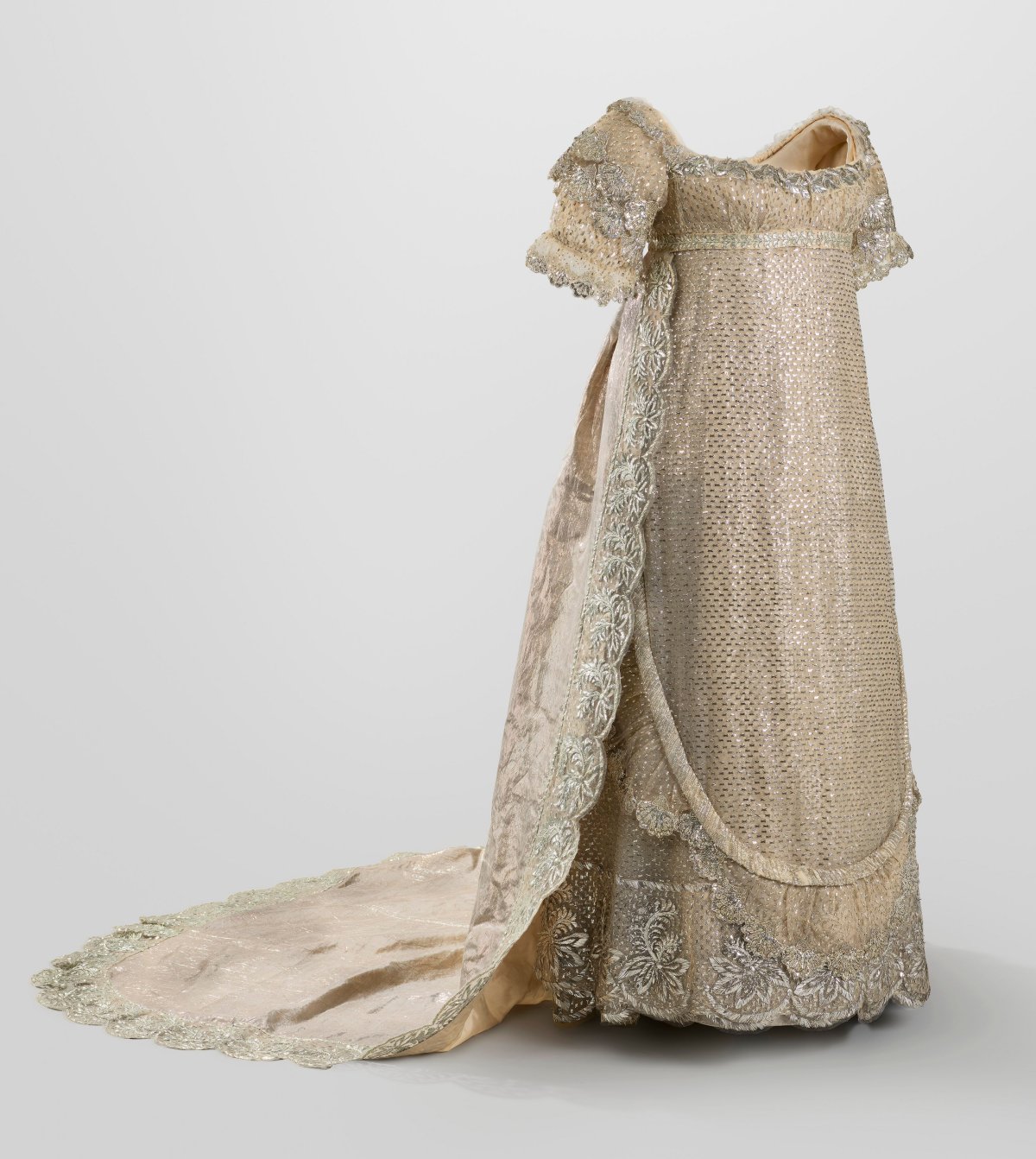
Tomorrow, an auction house in England will offer a regency-era brooch linked to one of the most popular (and most tragic) princesses of that age: Princess Charlotte of Wales.

The brooch, which reportedly dates to 1815, is described in the auction notes as “set with a central squared cushion cut emerald estimated to weigh 2.47 carats, with step cut and oval cut emeralds to the cardinal points claw set in gold cut down collets, with old mine cut diamond scrolls and cut down collet set diamond accents, approximately 0.94 carats total, mounted in gold backed silver.”

The brooch is being auctioned with a fitted box, the top of which has an engraved message that explains its provenance: “This broach belonged to Her Royal Highness Princess Charlotte Augusta, Obt. [died] 6 Nov 1817 As. [at the age of] 22, & on her lamented demise, was the kind and valued gift of Her Consort, Prince Leopold of Saxe Coburg to Mary Anne John Thynne, one of HRH’s Ladies of the Bedchamber, in attendance on that afflicting event, whose wish it is, that it should descend unalter’d to posterity, in lasting and grateful remembrance of its former beloved & illustrious possessor.” (Note that Charlotte’s age is incorrectly stated on the box—she was a few months shy of her 22nd birthday when she died.)

Princess Charlotte Augusta of Wales was the only daughter of King George IV of the United Kingdom and his much-loathed wife, Caroline of Brunswick. The couple were already estranged when Princess Charlotte was born in 1796, almost exactly nine months after their royal wedding. Her childhood upbringing was part of an extended battle between George and Caroline, and she was often used as a pawn in their decades-long power struggle.

It should come as no surprise, then, that Princess Charlotte longed to marry and be free from her parents’ constant meddling. Because her parents hated each other so much that they could produce no more children, Charlotte was expected eventually to follow her father as Britain’s monarch, so her choice of spouse was a crucial one. After breaking off her early engagement to the Prince of Orange (later King Willem II of the Netherlands), Charlotte settled on Prince Leopold of Saxe-Coburg, a handsome German prince who had fought in the Napoleonic Wars.

Charlotte and Leopold were married on May 2, 1816, at Carlton House, the London home of Charlotte’s father. The elaborate wedding gown that she wore is currently on display at the Queen’s Gallery, Buckingham Palace as part of this year’s summer exhibition, Style & Society: Dressing the Georgians.

The couple settled at Claremont House, an 18th-century mansion in Surrey. Charlotte set up her own domestic household, with two aristocratic ladies, Lady Emily Murray (daughter of the Duke of Northumberland) and Lady John Thynne (daughter-in-law of the Marquess of Bath), serving as her Ladies of the Bedchamber.
Sadly, though, Charlotte and Leopold’s wedded bliss was short-lived. After suffering from an early miscarriage, the 21-year-old princess discovered that she was pregnant again in the spring of 1817. On November 5, several weeks after her expected due date, Charlotte suffered through the difficult delivery of a stillborn prince. Just a few hours later, she also died.

The country descended into mourning. Charlotte’s death at Claremont House was a shocking jolt to the monarchy. Suddenly, the family found themselves without a legitimate heir to the throne, as Charlotte had been the only legitimate grandchild of King George III and Queen Charlotte. But it was even more devastating to the core group of family and courtiers at Claremont House. Prince Leopold, who had lost both his wife and his son, was supported in his grief by his personal physician and private secretary, Baron Stockmar (who was later a trusted early advisor of Queen Victoria and Prince Albert). Though he would eventually go on to remarry (and be elected King of the Belgians), those who knew him well believed that he never really recovered from the losses.

At the time of her death, Charlotte was attended by several servants and a nurse, as well as by Lady John Thynne (one of her Ladies of the Bedchamber) and Mrs. Alicia Campbell, the much-loved governess who had become like a surrogate mother to Charlotte during her childhood. Lady John Thynne, née Mary Anne Master, was described in contemporary newspapers as someone to whom Charlotte “was so much attached.” Her husband became the 3rd Baron Carteret in 1838, and Mary Anne was known from then until her death as “Lady Carteret.” She’s the “Mary Anne John Thynne” mentioned on the brooch’s box, the person who was given the emerald and diamond brooch by Prince Leopold as a token of remembrance after Charlotte’s death.

Lady Carteret remained close to the royal family, serving as a lady-in-waiting to Charlotte’s aunt, Princess Sophia, after the princess’s death. The brooch has remained in Lady Carteret’s family until now. It will be sold by Dreweatts in a live auction at Donnington Priory in Berkshire (with online bids also accepted) on July 12, and it’s expected to bring between 10,000 and 15,000 pounds at auction.
Leave a Reply
You must be logged in to post a comment.